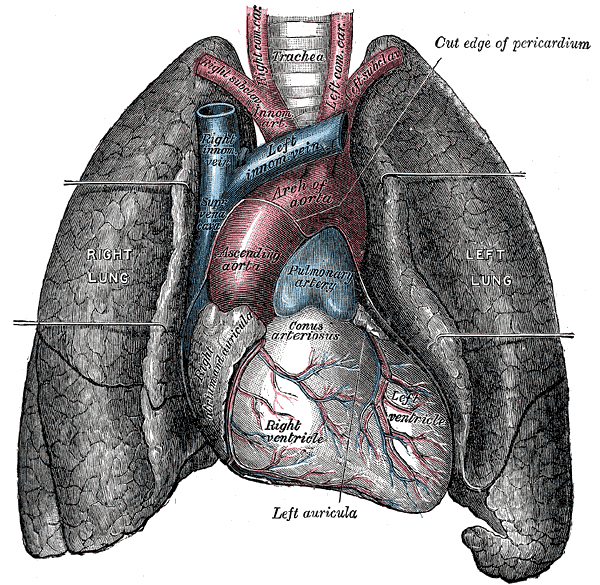Tracking The Hepatitis A, B, C, D And E Virus Hazards And How To Prevent It
Headaches, headaches, headaches, headaches, headaches. This condition was one of the symptoms of hepatitis. This inflammation can cause damage to cells, tissues, even all parts of the liver. Hepatitis can occur due to a disease that indeed attacks the liver cells or other diseases that cause liver complications. Understanding of hepatitis can be easier if we know more about the liver. [1]
There are five hepatitis-causing viruses, named hepatitis A, hepatitis B, hepatitis C, hepatitis D and hepatitis E. Although all five viruses can produce similar symptoms and have the same effect, each has a unique way of transmission and its impact on health. Hepatitis is usually mentioned using either of the two terms, "acute" or "chronic". Acute illness affects a person for a short time and can recover within a few weeks without any lasting effect. Chronic illness lasts long, sometimes for a lifetime. [2]
How to prevent it ?
Here is how to prevent and treatment that can be done to suppress and minimize the risk of infected viral hepatitis virus :
1. Efforts to prevent and treat Hepatitis A
Prevention efforts and treatment for hepatitis A can be done by giving vaccinations or hepatitis A immunization can be done with his own form / havrix or a combination form with hepatitis B vaccine (twinrix). Immunizations can be given to toddlers and children from ages 2-18 years once.
While for adults can be done with immunization (booster) after 6-12 months of first immunization. This immunization will last 15-20 years. If a person has been immunized, he / she may get back Hepatitis A, possibly because of VBA infection that occurred between 2-4 weeks after immunization, because at that time the body has not produced the maximum amount of antibodies. [3]
2. Efforts to prevent and treat Hepatitis B
Prevention of Hepatitis B should be done if in your neighborhood there are people with hepatitis B. Because hepatitis B disease is one of the diseases that are easily transmitted. Transmission of hepatitis B disease including the easy, for example just because using a bath together with people with hepatitis B, you can be at risk of contracting this disease.
Furthermore, by using immunization or called passive immunoprophylaxis. Passive immunoprophylaxis is performed with hepatitis B immunoglobulin (HBIG), which is a sterile solution containing antibodies that can fight hepatitis B. This HBIG is taken from donor blood that has antibodies to hepatitis B and is used as passive immunoprophylaxis. Passive immunoprophylaxis is used in 4 circumstances, namely when newborns from mothers infected with hepatitis B; after exposure to needles; after having sex; and after liver transplant. Immunoprophylaxis is required in infants born to positive HBsAg mothers. [4]
3. Efforts to prevent and treat Hepatitis C
Hepatitis C can not be prevented by using vaccination. But there are several ways we can take to reduce the risk of transmission, such as stop or not using drugs and avoid sharing the use of personal items that may be contaminated blood of people infected with this hepapitiis C virus, such as shavers or toothbrushes it uses .
Furthermore, although the disease is rarely transmitted through sex, the use of safety devices such as condoms in sex can keep you from hepatitis C. Especially if there is contact with blood, such as anal sex or menstrual blood. [5]
4. Efforts to prevent and treat Hepatitis D
The only known way today that can prevent hepatitis D is by avoiding hepatitis B infection. You can take the following precautions to reduce your risk of hepatitis B :
Conduct vaccination. There is a hepatitis B vaccine for all children. Adults who are at high risk for hepatitis D should also be vaccinated, such as those who use injecting drugs such as heroin or cocaine. Vakinasi is usually given in a series of three injections every six months. Be sure to use a sterile needle, every time you inject the medicine. Never use the same needle with another person. Inni will endanger you personally.
Conduct sexual activity with a safe condom with all sexual partners. You should not engage in unprotected sex unless you believe that your sex partner is not infected with hepatitis or other sexually transmitted infections.
Be careful using tattoos and body piercings. Go to a trusted shop every time you tattoo or body piercing. Ask how they clean their equipment and make sure their employees use sterile needles. [6]
5. Efforts to prevent and treat Hepatitis E
Hepatitis E is a disease that affects the liver and is caused by Hepatitis E virus. Its spread is usually through food and drink contaminated by this virus. This virus according to some medical experts, the virus is more easily spread to areas that have poor sanitation. Hepatitis E virus is a spherical RNA virus.
The virus was originally referred to as the cause of enterically transmitted non-A non-B hepatitis (ET-NANB). VHE is transmitted through oral fecal pathways. Stool contaminated drinking water is the most common transmission medium. Hepatitis E almost matches hepatitis A. The hepatitis E virus (HEV) is transmitted through human waste to the mouth and is spread through contaminated food or drink. The highest rates of hepatitis E infections occur in poorly agitated areas that support transmission of this gene virus. Hepatitis E causes an acute illness but does not cause chronic infection In your liver. [7]
These are some tips to keep yourself from the danger of hepatitis A, B, C, D and E virus and how to prevent it. With you knowing the prevention efforts you can avoid since din, before the virus attacks you and your family.
Reference :
[1] (http://penyakithepatitis.org/cara-mencegah-hepatitis-2/)
[2] (http://kir-31.blogspot.co.id/2010/11/penjelasan-perbedaan-antara-hepatitis-b.html)
[3] (http://obat-hepatitis.com/cara-pencegahan-dan-pengobatan-hepatitis/)
[4] (http://obathepatitisb.com/cara-pencegahan-hepatitis-b/)
[5] (http://www.alodokter.com/hepatitis-c/pencegahan)
[6] (https://hellosehat.com/pusat-kesehatan/hepatitis/gejala-penyebab-hepatitis-d/)
[7] (https://dokterindonesiaonline.com/2013/11/25/penanganan-dan-pencegahan-hepatitis-e-2/)
